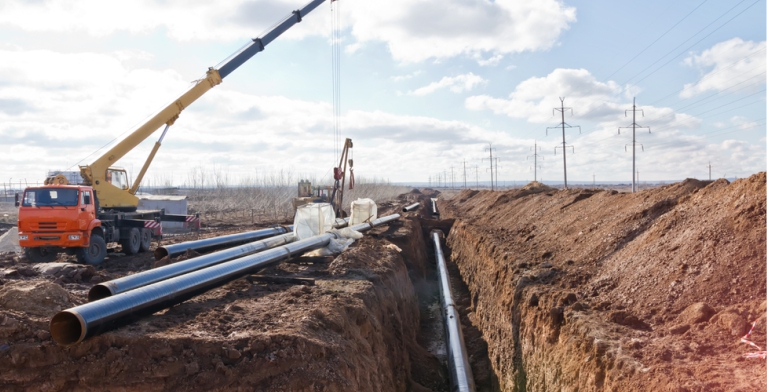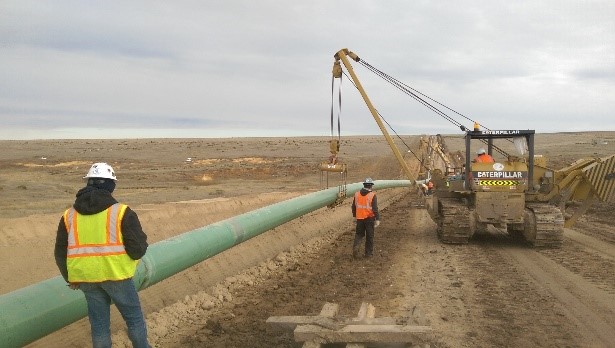What Sets Creek Pipe Midland Stands Out for Texas Installations
Comprehending the Basics of Pipes Installation: What You Required to Know Concerning the Refine
Proper pipe installation is essential for any type of plumbing system. It needs cautious consideration of different aspects, including material choice and adherence to neighborhood laws. A well-planned format can protect against problems like pressure loss, while the right devices assure reliable signing up with strategies. Nonetheless, also experienced installers can make typical errors. Comprehending these fundamentals can cause a much more reliable and durable system, prompting a more detailed take a look at the crucial elements associated with the procedure.
Selecting the Right Products for Pipe Installation
When thinking about pipe installation, the selection of appropriate materials is necessary to guaranteeing longevity and performance. Different materials are offered, each offering special benefits and considerations. For instance, PVC pipelines are lightweight, immune to rust, and economical, making them perfect for domestic plumbing. On the other hand, copper pipes, understood for their durability and ability to stand up to heats, are typically favored for home heating systems.Additionally, galvanized steel pipelines offer toughness and resilience, suitable for heavy-duty applications, although they are vulnerable to rust over time.For below ground installments, polyethylene pipelines are preferred as a result of their adaptability and resistance to stress and anxiety cracking. Appropriate material choice depends upon the certain needs of the task, consisting of pressure scores, temperature variations, and the chemical nature of the liquids being carried - Creek Pipe Midland. Eventually, informed selections concerning pipe products add significantly to the total success and durability of pipes systems
Understanding Local Building Codes and Regulations
Just how can recognizing local building ordinance and laws impact pipe installation? Experience with these codes is vital for making certain that pipe installments are secure, certified, and reliable. Regional building ordinance detail certain requirements concerning materials, installation techniques, and safety and security measures, which must be abided by in order to prevent potential legal concerns and expensive fines.Failure to conform can cause examinations being stopped working, hold-ups in project conclusion, or also mandated removal of poorly mounted pipelines. In enhancement, recognizing zoning legislations and regulations can influence the sort of materials allowed, along with the methods used for installation.Contractors and homeowners alike must invest time in examining regional laws prior to commencing any installation task. This proactive approach not just advertises safety and security but additionally boosts the total quality and durability of the pipes system, eventually cultivating long-lasting capability and satisfaction.
Planning Your Pipe Layout and Layout
Appropriate preparation of pipe layout and style is necessary for attaining a reliable pipes system. This procedure starts with examining the details demands of the area, considering the location of fixtures and home appliances. Exact dimensions assure that pipelines are appropriately routed, reducing bends and transforms that can cause press loss.Consideration of the circulation rates and the kinds of materials utilized is essential, as various products have varying toughness and compatibility with pipes systems. Furthermore, the developer must represent future growths or modifications to the format, permitting flexibility in situation of renovations.Efficient drainage and ventilation are additionally considerable parts of the design, as they avoid blockages and assure correct waste removal. Cooperation with local building codes assures compliance and safety and security, which is extremely important in any plumbing installation job.
Important Devices and Devices for Installation
Successful pipe installation rests on having the right tools and equipment available. Necessary tools include pipe cutters for clean cuts, wrenches for tightening up fittings, and pliers for gripping and transforming pipes. In addition, a level guarantees pipes are installed equally, while a measuring tape aids in attaining precise lengths.For particular products, a welding torch might be needed for copper pipelines, while a PVC cutter is essential for plastic alternatives. Security tools, such as handwear covers and goggles, safeguards installers from potential hazards throughout the process.A pipeline bender can be particularly beneficial for developing smooth contours without compromising honesty, while a torque wrench assurances that links are protected to the maker's specifications.Having these devices easily available not just promotes a smoother installation procedure yet likewise contributes to the overall toughness and capability of the pipes system. Correct devices is crucial in attaining resilient results.
Methods for Correct Pipe Signing Up With and Sealing
Accomplishing a safe and secure and leak-free connection between pipelines needs careful focus to joining and sealing strategies. Various methods exist, each fit to various pipe materials and applications (Creek Pipe reviews). For instance, welding is often used for metal pipelines, making sure robust links through warm combination. On the other hand, plastic pipelines benefit from solvent concrete or fusion welding, creating strong, permanent bonds.Threaded links are usual in both metal and plastic piping, needing accurate alignment and making use of proper sealers, such as Teflon tape or pipe dope, to stop leakages. Compression fittings provide another alternative, where mechanical stress protects the pipelines together, making them conveniently took apart for maintenance.Regardless of the technique selected, proper prep work is necessary. This consists of cleaning pipe finishes and ensuring they are devoid of particles. Executing these methods diligently will improve the longevity and dependability of the pipe system, eventually adding to its efficient performance
Usual Mistakes to Stay Clear Of Throughout Installation
During pipe installation, avoiding common errors is vital for making certain a dependable and effective system. One frequent mistake is failing to gauge and cut pipelines accurately, which oil and gas pipeline companies can result in incorrect fittings and leakages. Furthermore, ignoring to inspect the compatibility of products can cause rust or various other damages in time. Poorly safeguarding joints and connections can additionally develop powerlessness in the system, creating potential failures.Another typical blunder is forgeting the significance of slope and drainage; pipelines should be set up at the correct angle to assist in proper circulation. Inadequate assistance for pipelines can cause sagging and stress, influencing the stability of the system. Eventually, neglecting local codes and guidelines can cause costly rework and safety and security hazards. By being aware of these risks, installers can considerably enhance the durability and performance of pipe systems.
Upkeep Tips for Lasting Pipe Equipments
To assure the durability of pipe systems, normal examinations and cleaning are important methods. These measures assist determine possible concerns before they escalate into significant troubles. Additionally, employing proper insulation strategies can further shield pipes from temperature level gas pipeline repair near me variations and environmental factors.
Normal Assessments and Cleaning
Regular evaluations and cleaning are necessary for preserving the durability and performance of pipe systems. On a regular basis examining pipelines for signs of deterioration, leakages, or blockages can assist identify possible concerns prior to they intensify into costly repair work. Cleaning pipelines regularly eliminates build-up that can limit circulation and advertise deterioration. It is advisable to schedule evaluations at the very least annually, but more frequent checks may be necessary in high-usage environments. Utilizing professional services for extensive cleansing assurances that all particles is efficiently gotten rid of. Furthermore, keeping records of evaluations and maintenance tasks aids in tracking the system's health and wellness in time - Creek Pipe Company. By focusing on these techniques, home proprietors can improve the dependability and life-span of their pipe systems
Correct Insulation Techniques
Effective insulation techniques play an important function in maintaining the efficiency and durability of pipe systems. Proper insulation lessens warmth loss in hot water pipes and protects against freezing in cool water pipelines, significantly minimizing power expenses and prospective damage. Typical products made use of for insulation include fiberglass, foam, and rubber, each offering differing levels of thermal resistance. It is crucial to ensure that insulation is used evenly, covering all subjected locations without spaces. Additionally, securing insulation with proper fasteners aids maintain its position and use this link efficiency with time. Routine assessments ought to be conducted to determine damage, assuring prompt substitutes. By applying these techniques, pipe systems can run effectively and have an extensive life span, inevitably benefiting both the setting and the homeowner.

Often Asked Inquiries
How Do I Establish the Appropriate Pipe Size for My Task?
Determining the suitable pipe size involves assessing the project's circulation demands, pressure requirements, and the kind of liquid being moved. Consulting design criteria and carrying out estimations guarantees optimal performance and performance in the installation procedure.
What Are the Ecological Effects of Different Pipe Materials?

Can I Set Up Pipes Myself or Should I Hire an Expert?
The inquiry of whether to install pipes separately or work with an expert typically depends upon the individual's skill degree and task intricacy. An expert may assure compliance with regulations and decrease prospective long-term issues.

Exactly How Lengthy Can I Anticipate My Pipe Installation to Last?
The long life of pipe installation varies significantly, typically lasting 20 to 100 years, depending upon products, installation quality, and maintenance. Routine assessments and correct care can improve longevity and prevent premature failings.

What Are the Signs of a Failing Pipe System?
Indicators of a falling short pipe system include regular leakages, uncommon water pressure modifications, discolored water, mold growth, and consistent moisture. House owners should monitor these signs to avoid pricey damage and warranty timely repairs are made.